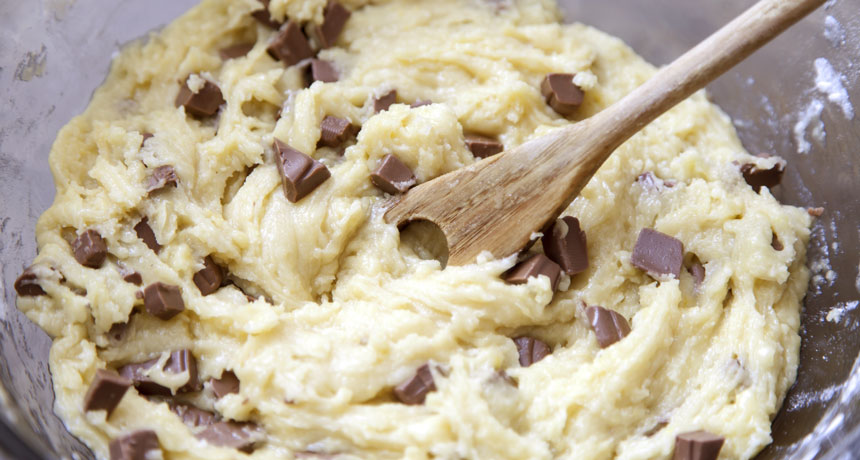Step away from the cookie dough. E. coli outbreaks traced to raw flour
One recent outbreak of foodborne illness was tied to bacteria in flour from a single facility

DOUGH DEBACLE In 2015 and 2016, E. coli-tainted flour sickened dozens of people in the United States, most of whom had eaten raw dough or batter while baking.
George Nazmi Bebawi/shutterstock
- More than 2 years ago
Eggs, long condemned for making raw cookie dough a forbidden pleasure, can stop taking all the blame. There’s another reason to resist the sweet uncooked temptation: flour.
The seemingly innocuous pantry staple can harbor strains of E. coli bacteria that make people sick. And, while not a particularly common source of foodborne illness, flour has been implicated in two E. coli outbreaks in the United States and Canada in the last two years.
Pinning down tainted flour as the source of the U.S. outbreak, which sickened 63 people between December 2015 and September 2016, was trickier than the average food poisoning investigation, researchers recount November 22 in the New England Journal of Medicine.
Usually, state health departments rely on standard questionnaires to find a common culprit for a cluster of reported illnesses, says Samuel Crowe, an epidemiologist at the Centers for Disease Control and Prevention in Atlanta, who led the study. But flour isn’t usually tracked on these surveys. So when the initial investigation yielded inconclusive results, public health researchers turned to in-depth personal interviews with 10 people who had fallen ill.
Crowe spent up to two hours asking each person detailed questions about what he or she had eaten around the time of getting sick. Asking people what they ate eight weeks ago can be challenging, Crowe says: Many people can’t even remember what they ate for breakfast that morning.
“I got a little lucky,” Crowe says. Two people remembered eating raw cookie dough before getting sick. They each sent Crowe pictures of the bag of flour they had used to make the batter. It turned out that both bags had been produced in the same plant. That was a “pretty unusual thing,” he says.
Follow-up questioning helped Crowe and his team pin down flour as the likely source. Eventually, U.S. Food and Drug Administration scientists analyzed the flour and isolated strains of E. coli bacteria that produce Shiga toxins, which make E. coli dangerous.
Disease-causing bacteria, including E. coli, usually thrive in moist environments, like bags of prewashed lettuce (SN: 12/24/16, p. 4). But the bacteria can also survive in a desiccated state for months and be re-activated with water, says Crowe. So as soon as dry flour mingles with eggs or oil, dormant bacteria can reawaken and start to replicate.
Cookie dough wasn’t the culprit in every case. A few children who got sick had been given raw tortilla dough to play with while waiting for a table at a restaurant. The cases all involved wheat flour from the same facility, leading to a recall of more than 250 flour-containing products.
There are ways to kill bacteria in flour before it reaches grocery store shelves, but they aren’t in use in the United States. Heat treatment, for example, will rid flour of E. coli and other pathogens. But the process also changes the structure of the flour, which affects the texture of baked goods, says Rick Holley, a food safety expert at the University of Manitoba in Canada who wasn’t part of the study. Irradiation, used to kill parasites and other pests in flour, might be a better option, Holley says. But it takes a higher dose of radiation to zap bacteria than it does to kill pests.
Or, of course, people could hold out for warm, freshly baked cookies.







